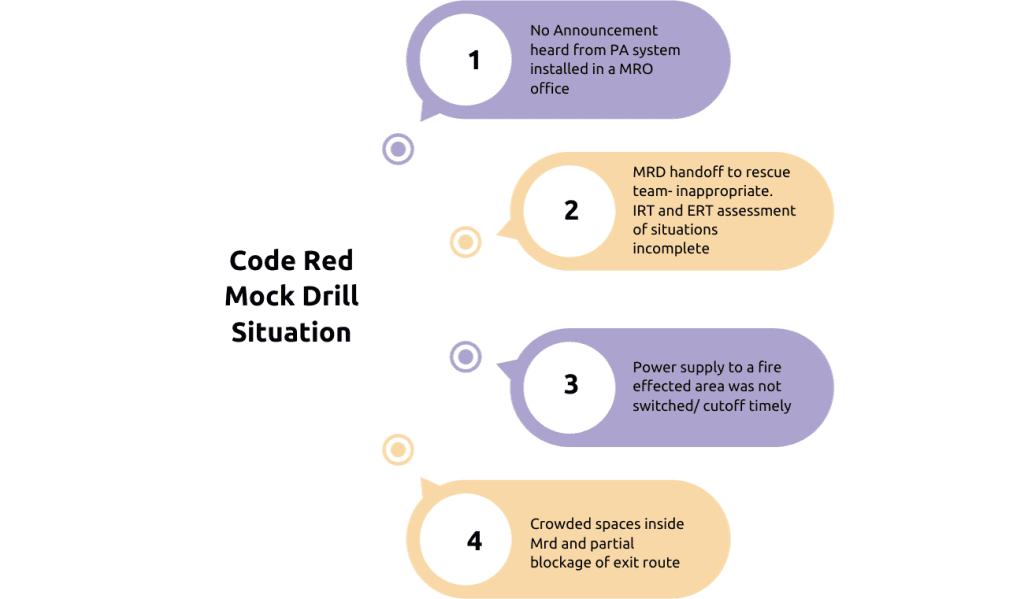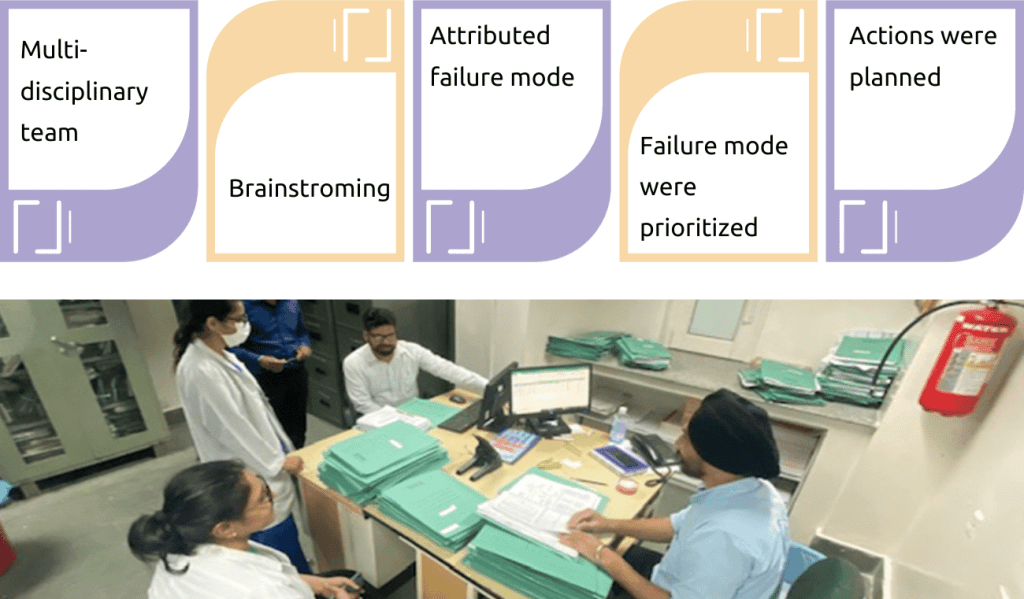FMEA: Mitigating Hazard Risk Assessment and Effective implementation of mitigating measures
Read the Magazine in PDF
Abstract
This article highlights Fortis Hospital Mohali's effective use of Failure Mode and Effects Analysis (FMEA) to proactively address risks in its Medical Records Department. Collaborative efforts and systematic FMEA application led to successful hazard reduction, achieving a remarkable 95% risk reduction. The approach showcases the significance of Proactive approach using FMEA tool in risk assessment, mitigation, and cultivating a safety-focused culture within healthcare organizations.
Introduction
Fortis Hospital Mohali is a flagship hospital that is part of the Fortis Healthcare Group. The hospital has been accredited by the Joint Commission International (JCI-7th Etd) and National Accreditation Board of hospitals (NABH-5th Etd ) since 2007 . This accreditation and implementation have helped the hospital build a culture of safety and identify proactive risks to mitigate hazards.
Brainstorming sessions identified FMEA triggers and
prioritized failure modes, leading to risk mitigation actions. The project ran from July to September 2021, identifying fire, electrical, and environmental hazards.
FMEA facilitated effective risk assessment and mitigation, aided by the hospital and safety culture. This approach exemplifies proactive risk management, utilizing and methodology for successful hazard reduction. The hospital and culture of safety and risk assessment methods combine for improved risk mitigation in the Medical Records Department.
Risk Management
Risk management is an integral aspect of any organization. It involves identifying, assessing, and prioritizing risks, followed by taking the necessary steps to mitigate them. Failure Mode and Effects Analysis (FMEA) is one such method used to discover failure at its earliest possible point in product or process design. Process FMEA (PFMEA) discovers failure that impacts product quality, reduced reliability of the process, customer dissatisfaction, and safety or environmental hazards.
In this article, we will discuss how FMEA was used to reduce risks in a department and the results achieved.
One of the departments that underwent proactive risk assessment and effective implementation of mitigation measures was the Medical Records Department. This department is an essential part of the hospital, and it deals with critical requirements such as legal and statutory components attached to confidentiality, privacy, and security elements. Keeping these requirements in mind, the hospital facilities were audited to identify and mitigate risks/ hazards if any to the life and property through the incorporation of various preventive measures.
Failure Modes and Effects Analysis (FMEA)
Fortis Hospital Mohali employed FMEA to proactively address risks in its Medical Records Department, collaborating with multidisciplinary teams.


Pre-Intervention FMEA Assessment
The initial FMEA score stood at 1080, indicating high risk. The assessment covered fire, electrical safety, utility services, and security. This score relied on risk identification, failure modes, and actions.
Predicted mitigation stood at 73% risk reduction with Hazard Score of 289 . A multi disciplinary team brainstormed proactive solutions, The team aimed for a 73% risk reduction.
Mitigation measures such as
- Signages -Glow in dark signages placed
- Electrical safety Audit conducted.
- ELCB installed
- Emergency lights placed
- Staff safety training held (pre & post test)
- PA system Installed
- Access control
- Leveling of Floor to avoid water collection/
- Seepage/dampness check & painting done
- Fire exit passage cleared
- Decongested MRD department by reducing Racks &; adding compact cabinets
Post-Intervention FMEA Evaluation
Post intervention FMEA showed remarkable results, RPN reduced from1080 to 46 and achieving a 95% risk reduction and exceeding predictions with No adverse/hazardous event reporting. Focusing on high-risk areas like fire safety, design changes facilitated smoother evacuation during emergencies. Strategic placement of detectors, extinguishers, and lights reduced risks significantly.


Staff awareness
An additional crucial facet of risk management is staff awareness of diverse risk mitigation measures. Through pre- and post-awareness evaluations, compliance surged from 2.7% to 100%. Simple actions like strategic signage, enforcing risk measures, and enhancing team skills aided in risk reduction.
The team’s endeavors yielded tangible and intangible benefits: heightened staff safety perception bolstered the safety culture and recorded security, curbing losses. Risk reduction attained 95%, with 97.5% in electrical hazards, 96% in rescue risks, and 95% in fire hazards. Effective risk management holds paramount importance for all organizations. Employing methods such as FMEA to identify, assess, and prioritize risks, alongside fitting interventions, proves efficacious in risk mitigation.
The team’s achievements yielded a remarkable 95% risk reduction, fostering a safer work environment. Maintaining vigilance, regular risk assessment, and mitigation are pivotal to ensuring a secure and thriving workplace.
Conclusion
Fortis Hospital Mohali and Medical Records Department underwent proactive risk assessment, and effective implementation of mitigation measures was achieved. The hospital used Failure Mode and Effects Analysis (FMEA) to identify, assess, and mitigate risks in the department, and this methodology proved to be effective. By adopting a culture of safety, the hospital was able to identify proactive risks and mitigate hazards effectively.
In this case, the team’s efforts resulted in a 95% reduction in risk, which contributed to a safer workplace for all employees. It is essential to maintain vigilance and continue to assess and mitigate risks regularly to ensure a safe and healthy work environment. Effective risk management is critical for any organization, and FMEA is an effective method for reducing risks.
FAQs
Q.What is FMEA, and how is it applicable in the MRD department of a hospital?
FMEA stands for Failure Mode and Effects Analysis. It is a tool used for identifying and analyzing potential failures or risks in a system, product, or process. In the context of a hospital, FMEA can be used to identify potential risks and failures in various departments, including the Medical Records Department (MRD). The MRD department is responsible for maintaining and managing patient records. While it may not be considered a clinical department, it plays a critical role in ensuring the safety and quality of patient care. FMEA can be used in the MRD department to identify potential risks and failures in the system, such as the misplacement or loss of patient records, errors in data entry or retrieval, or breaches of patient confidentiality. Implementing FMEA in the MRD department can help build a culture of safety and continuous improvement. By proactively identifying and addressing potential risks and failures, the department can improve the quality and accuracy of patient records, enhance patient safety, and minimize the risk of adverse events.




